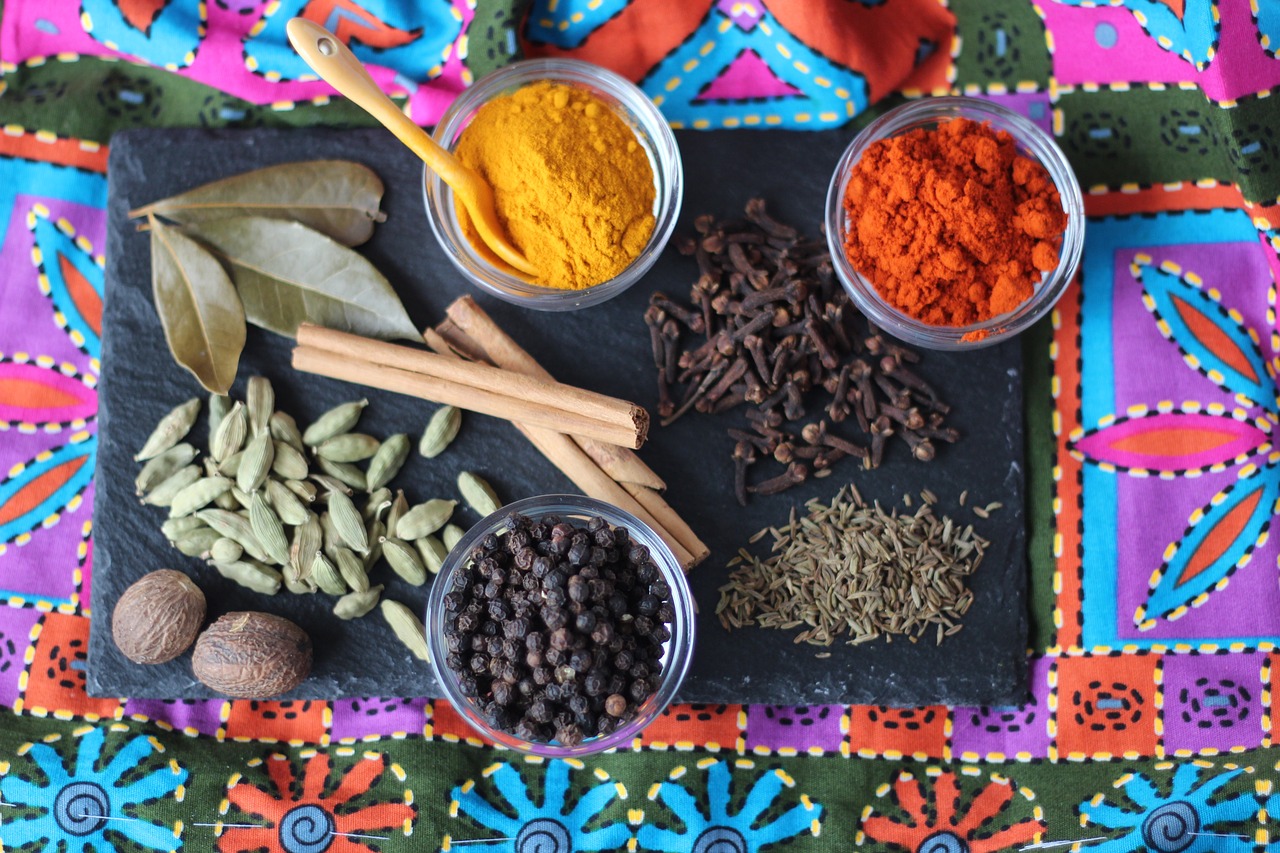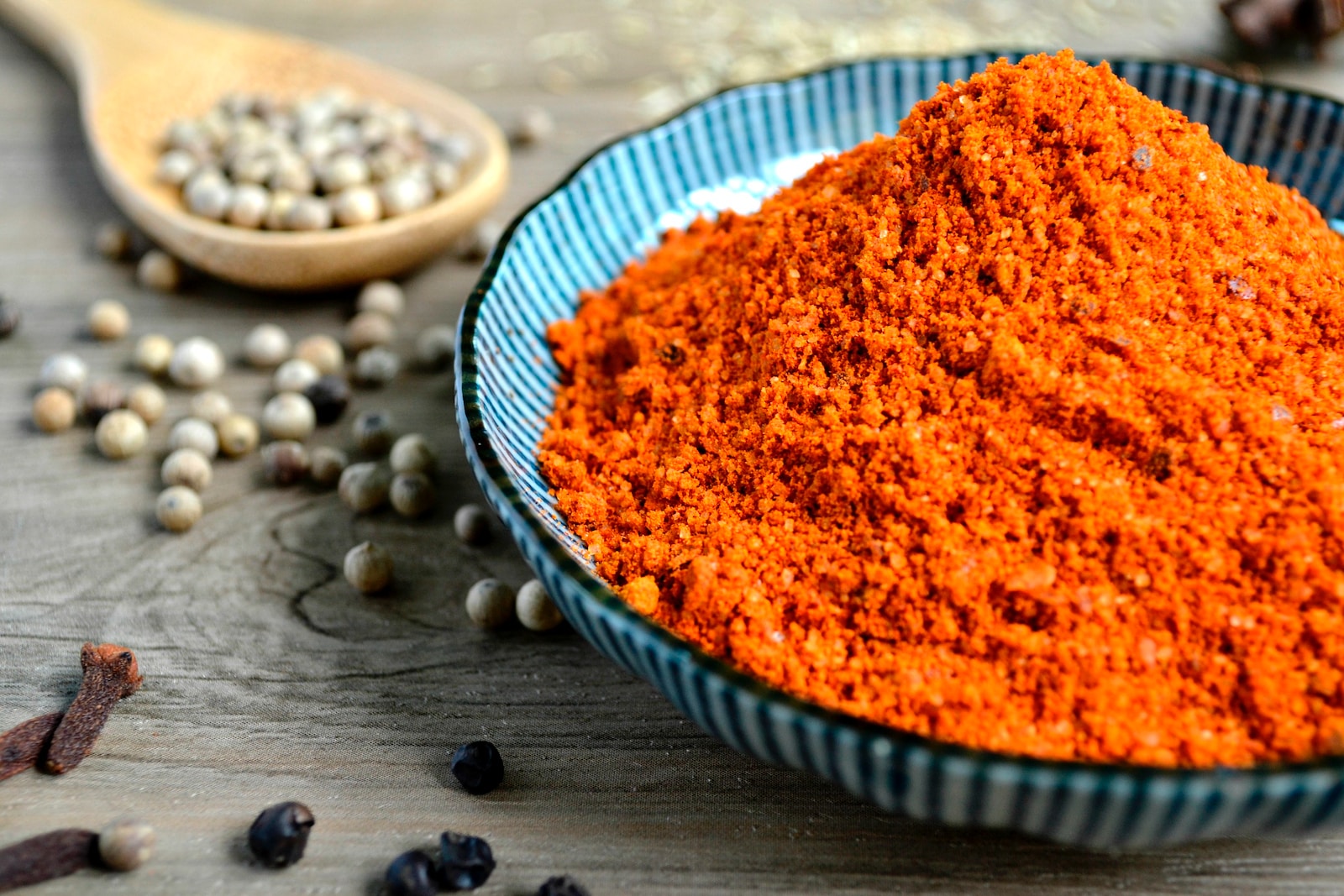CookingSubstitutes is a blog dedicated to exploring suitable alternatives in recipes, providing helpful how-to guides, and sharing mouthwatering recipes.
We're here to make your culinary adventures even more delightful!
3 Best Garam Masala Substitutes: Exploring Alternatives and Differences

Garam masala is a popular spice blend used in South Asian cuisine, particularly in Indian, Pakistani, and Bangladeshi recipes. It adds a rich and aromatic flavor to dishes, but what if you don’t have it on hand or can’t find it?
In this article, we will explore various garam masala substitutes, compare them to curry powder, tikka masala, and chaat masala, and delve into the origin and taste of garam masala. Whether you’re looking for alternatives or curious about the differences between these spice blends, we’ve got you covered.
When it comes to adding depth and complexity to your cooking, spices play a crucial role. Garam masala, with its combination of aromatic spices, elevates the flavor of many South Asian dishes.
However, there are instances when you might need a garam masala substitute due to availability or personal preference. Let’s explore the alternatives and variations that can serve as substitutes for this beloved spice blend.
What is Garam Masala?
The name “garam masala” translates to “hot mixture” in Hindi, but it refers to the warmth and intensity of the spices rather than their spiciness. The exact composition of garam masala can vary, but it typically includes a combination of spices such as coriander, cumin, cardamom, black pepper, cinnamon, cloves, and nutmeg. These spices are often toasted and ground to create a fine powder.
Garam Masala Substitutes: Options and Recommendations
If you don’t have garam masala on hand or prefer alternatives, there are several substitutes that can provide similar flavor profiles. Here are some options:
Curry Powder

Curry powder can be a decent substitute for garam masala, especially if you have the mild or medium variety. It offers a blend of spices that complements Indian dishes, although it may change the appearance of the final dish due to the inclusion of turmeric.
Cumin and Allspice

A mixture of cumin and allspice can partially replicate the flavor of garam masala. It won’t be an exact match, but it can provide a warm and aromatic touch to your recipes.
Your Own Spice Blend
If you have the time and ingredients available, you can make your own simplified spice blend using coriander, cumin, black peppercorns, cardamom, cloves, nutmeg, and cinnamon. Mixing these spices together in specific ratios will result in a warming and aromatic substitute for garam masala.
Remember:
The proportions of the substitute may vary based on personal preference and the specific recipe you’re working with. It’s always a good idea to experiment and adjust the flavors according to your taste.
Garam Masala vs. Curry Powder
While both garam masala and curry powder are spice blends used in Indian cuisine, they have distinct differences in flavor and composition. Garam masala is more aromatic and warming, with a balanced combination of sweet, savory, and earthy notes. On the other hand, curry powder tends to have a milder flavor profile with a hint of spiciness.
Curry powder usually includes spices like coriander, turmeric, cumin, fenugreek, and red chili powder. It often contains turmeric, which gives it a vibrant yellow color. Unlike garam masala, which is used as a finishing spice or added towards the end of cooking, curry powder is typically used as a primary spice blend in curry dishes.
Garam Masala vs. Tikka Masala
Tikka masala is a popular Indian dish known for its rich and creamy tomato-based sauce. While garam masala is an essential ingredient in tikka masala, they are not the same thing. Garam masala is a spice blend, whereas tikka masala refers to a specific dish.
Garam masala adds depth and complexity to tikka masala, complementing the flavors of the other ingredients. It contributes to the overall taste profile of the dish, but it is not the sole defining factor. Tikka masala often incorporates additional spices, such as paprika, chili powder, and turmeric, to create its distinct flavor.
Garam Masala vs. Chaat Masala
Chaat masala is another spice blend commonly used in Indian cuisine, especially in street food and snacks. While garam masala and chaat masala may seem similar, they have different flavor profiles and applications.
Garam masala focuses on warmth and depth, whereas chaat masala leans towards tanginess and a slightly sour taste. Chaat masala typically includes spices like dried mango powder (amchur), black salt (kala namak), cumin, coriander, mint, and black pepper. It is often sprinkled on fruits, salads, chaats, and savory snacks to enhance their flavor.
| Spice Blend | Ingredients | Flavor Profile | Usage |
|---|---|---|---|
| Garam Masala | Cumin, coriander, cardamom, cinnamon, cloves, black pepper, nutmeg | Warm, earthy, aromatic | Used as a finishing spice in various dishes and curries |
| Curry Powder | Turmeric, coriander, cumin, fenugreek, mustard seeds, black pepper, cinnamon, cardamom | Earthy, mildly spicy, slightly sweet | Used as a primary spice blend in a wide range of Indian dishes, including curries and stews |
| Tikka Masala | Cumin, coriander, paprika, turmeric, ginger, garlic cloves, cinnamon, cardamom | Rich, tangy, mildly spicy | Used as a base for the popular chicken tikka masala dish and other North Indian recipes |
| Chaat Masala | Mango powder, black salt, cumin, coriander, mint, black pepper | Tangy, salty, slightly sour, aromatic | Sprinkled on fruits, salads, chaats, and savory snacks to add a burst of flavor |
FAQs
Can I substitute garam masala for curry powder?
Yes, you can substitute garam masala for curry powder, although the flavor profile may differ slightly. Curry powder is a blend of various spices, including turmeric, coriander, cumin, and fenugreek, while garam masala offers a different combination of spices. It’s best to adjust the proportions according to your taste and the specific recipe you’re preparing.
What is the difference between chaat masala and garam masala?
Chaat masala and garam masala are both spice blends used in Indian cuisine but with distinct flavor profiles. Garam masala focuses on warmth and depth, while chaat masala leans towards tanginess and a slightly sour taste. Chaat masala typically includes spices like dried mango powder, black salt, cumin, coriander, mint, and black pepper. It is often sprinkled on fruits, salads, chaats, and savory snacks to enhance their flavor.
Conclusion
Experimenting with different spice combinations allows you to tailor the flavors to your preferences and explore the diverse world of Indian cooking.
Whether you use garam masala or its substitutes, these spice blends will undoubtedly elevate the taste of your dishes and provide a delightful culinary experience.



